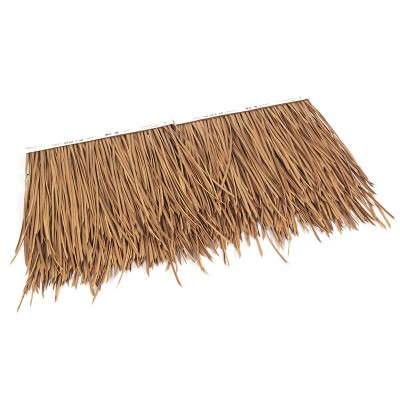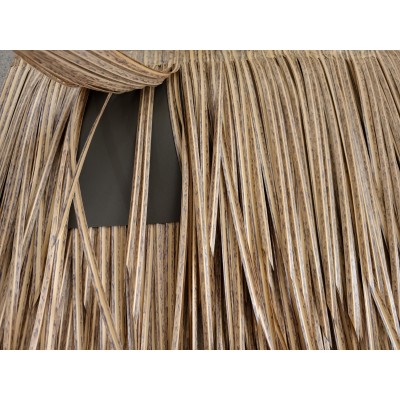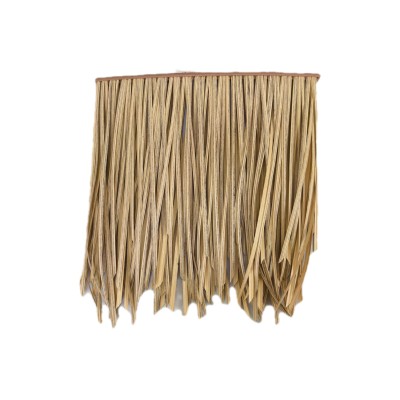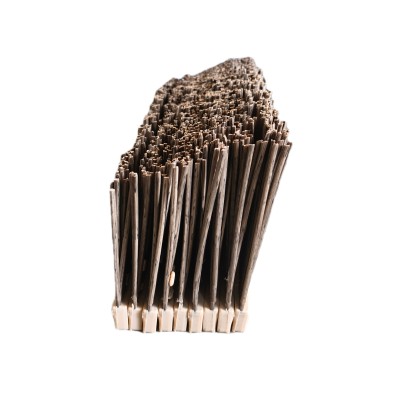High density Best Factory Price Original HDPE material Long life artificial reed thatch Africa
HDPE material artificial reed thatch features
Realistic appearance:
Through advanced production processes, such as weaving, dyeing and other technologies, it can imitate the color, texture and texture of natural reed thatch, and achieve a similar visual effect with the local natural thatch in Africa, making the architecture and landscape more natural beauty.
Long service life:
The HDPE material has the characteristics of anti-ultraviolet, anti-corrosion and anti-mildew, which makes the artificial reed thatch can maintain its original appearance and performance even in the harsh climatic conditions in Africa, such as strong sunlight, high temperature, humidity and the influence of the rainy season, and the service life is much longer than the natural thatch.
Low maintenance costs:
Compared to natural thatch, HDPE artificial reed thatch does not require regular replacement, repair or special treatment. Only occasionally rinse with water to remove dust and dirt, you can keep its appearance novel, reducing the maintenance of human and material costs.
Environmentally safe:
Many HDPE artificial reed thatch products use environmentally friendly production methods and recyclable materials, which have a low impact on the environment. At the same time, some products also add flame retardants, improve fire safety, can effectively reduce the risk of fire, especially in some dry areas of Africa, this feature is particularly important.
Easy installation: The installation process is relatively simple, does not require special skills or tools, owners can install themselves or choose professional installation services, thus saving installation costs and time, easy to be widely used across Africa.
Application scenarios in Africa
Building roof covering: In African homes, hotels, resorts, restaurants and other buildings, HDPE artificial reed thatch can be used for roof covering, adding a unique African style to the building, while providing good waterproof and insulation effect against the local inhospitable weather.
Landscape design: In parks, gardens, zoos, theme parks and other places in Africa, it can be used to decorate pavilions, pavilions, corridors, landscape pieces, etc., to create a natural and original landscape atmosphere, and integrate with the surrounding natural environment.
Interior decoration: In some African interior Spaces, such as bars, restaurants, hotel lobbies, etc., HDPE artificial reed thatch can be used for wall decoration, ceiling decoration or made into decorative pieces to create an indoor environment with African characteristics and give people a unique visual experience.
Advantage of use in Africa
Adaptation to local climate: Africa has a variety of climates, including arid, semi-arid, savanna and tropical rainforest. HDPE artificial reed thatch can adapt to a variety of climatic conditions, whether in hot and dry desert areas, or in wet and rainy tropical rainforest areas, can maintain stable performance, not easily affected by climate factors and damage.
Meeting cultural needs: Africa is rich in culture and tradition, and natural thatch has an important place in African architecture and culture. HDPE artificial reed thatch is similar to natural thatch in appearance, which can meet the needs of African people for the inheritance and continuation of traditional culture, while overcoming some shortcomings of natural thatch, such as easy damage and easy breeding of pests.
Economic and practical: Due to its long service life and low maintenance costs, although the initial procurement cost of HDPE artificial reed thatch may be slightly higher than that of natural thatch, in the long run, it can save users a lot of costs and has a high cost performance, especially suitable for the construction and development of some relatively undeveloped areas in Africa.



